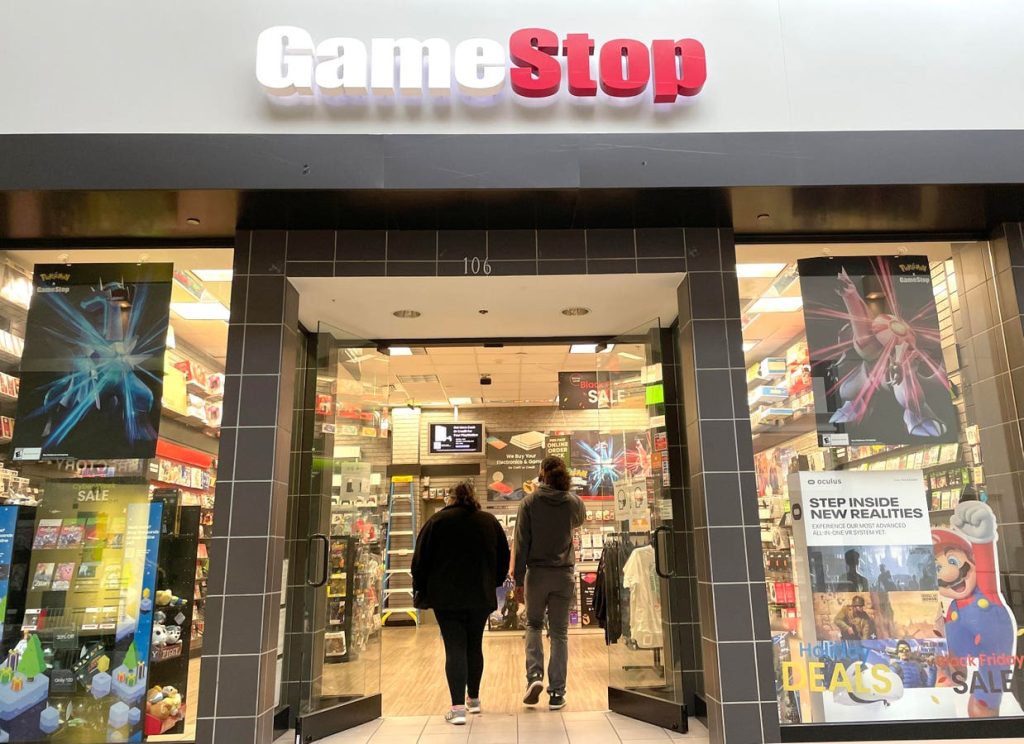GameStop’s Q3 Results: A Deeper Dive into the Financial Landscape
GameStop (GME) recently unveiled its third-quarter fiscal results, sparking a 15% surge in its stock price to $30.90. While this initial market reaction appears positive, a closer examination of the underlying financials reveals a more nuanced picture. The core narrative remains unchanged: declining revenues and persistent financial losses, albeit at a slower pace. The company’s survival hinges on a robust balance sheet fortified by a substantial $3.5 billion stock sale earlier this year. Notably, GameStop opted against holding a conference call to discuss these results, leaving investors to decipher the numbers independently.
A History of Declining Revenues: A Long-Term Trend
A historical overview of GameStop’s revenue trajectory paints a picture of consistent decline. From a peak of $8.5 billion in fiscal 2018, revenues have steadily eroded, with projections indicating a further descent to $3.8 billion by fiscal 2026. This represents a staggering 51% decline from the fiscal 2019 level of $8.3 billion. While fiscal 2022 witnessed an 18% revenue uptick, this proved to be a temporary reprieve, as the downward trend resumed in subsequent years. The ongoing decline raises concerns about the company’s long-term viability and its ability to regain its footing in a competitive gaming market.
Cash Flow Challenges: From Positive to Negative Territory
The impact of dwindling revenues is evident in GameStop’s cash flow position. While not perfectly mirroring the revenue trends, operating and free cash flows have transitioned from positive to negative territory over the past few years. Although the company managed a slight improvement in operating cash flow during the first nine months of the current fiscal year, reaching a negative $16.6 million compared to negative $192.7 million in the same period last year, this improvement was largely driven by non-recurring factors such as lower inventories and higher accounts payable. These are not sustainable strategies for long-term cash flow improvement. Free cash flow, a crucial metric for assessing a company’s financial health, also remains negative, signaling ongoing challenges in generating cash from operations.
Balance Sheet Strength: A Lifeline Amidst Declining Performance
Despite the bleak revenue and cash flow outlook, GameStop possesses a surprisingly robust balance sheet. The strategic decision to issue new shares in 2024, generating approximately $3.45 billion, has significantly bolstered the company’s cash reserves. With cash and marketable securities exceeding $4.6 billion and negligible debt of $20.5 million, GameStop has a substantial financial cushion to absorb ongoing losses. This strong balance sheet, representing 34% of its market capitalization in net cash, provides a critical lifeline as the company navigates its challenging turnaround.
Interest Income Masks Operational Losses: A Temporary Reprieve
GameStop reported a net income of $17.4 million, translating to $0.04 earnings per share (EPS), surpassing analyst expectations of a $0.03 loss. However, this seemingly positive result masks underlying operational weaknesses. The reported profit was primarily driven by a substantial $54.2 million in interest income generated from the large cash reserves accumulated through the stock sales. Stripping out this one-time gain reveals an operating loss of $33.4 million, highlighting the company’s continued struggle to generate profits from its core business operations. As interest rates potentially decline, this source of income will likely diminish, exposing the underlying unprofitability.
Valuation and Market Signals: A Mixed Bag
GameStop’s current valuation presents a mixed picture. While the company’s market capitalization to revenue ratio of 3.4x appears high, adjusting for the substantial net cash position yields a more reasonable enterprise value to revenue ratio of 2.2x. Compared to the past three years, where this ratio ranged from 0.8x to 1.3x, the current valuation appears somewhat elevated, although not excessively so. Additionally, the Relative Strength Index (RSI) of 60.25 suggests that the stock is currently in overbought territory, potentially signaling a short-term pullback.
Conclusion: A Precarious Path Forward
GameStop’s third-quarter results underscore the company’s ongoing challenges. While the influx of cash from stock sales has provided a temporary respite, the core issues of declining revenues and operational losses persist. The company’s future hinges on its ability to effectively utilize its cash reserves to revitalize its core business and navigate the evolving gaming landscape. Investors should approach GameStop with caution, recognizing the inherent risks associated with its current financial position and the uncertain path to sustained profitability. The current stock price surge, fueled by a superficial interpretation of the financial results, might not be sustainable in the long run. A deeper analysis reveals a company grappling with fundamental challenges, requiring a significant transformation to secure its future.


